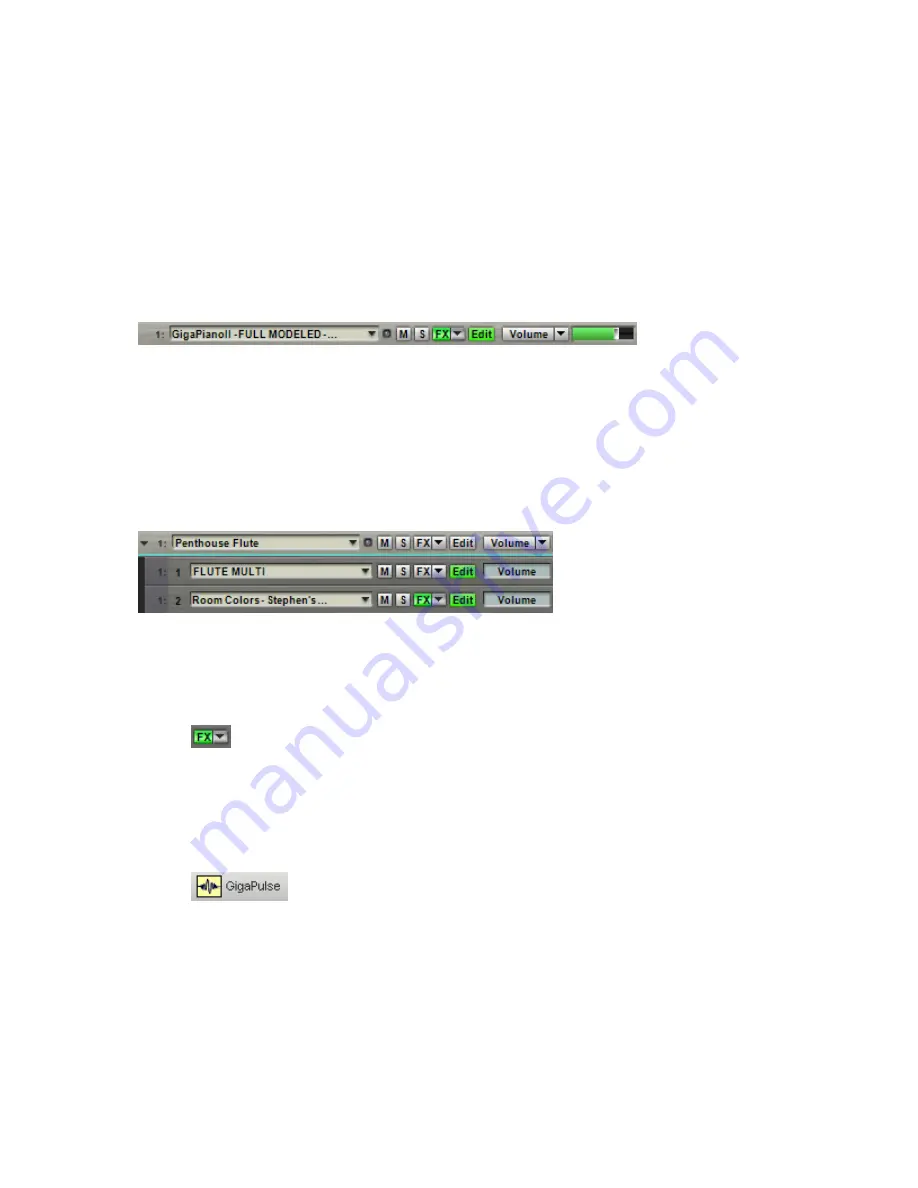
GIGAPULSE IN THE MIDI MIXER
GigaPulse Convolution can be used to model environments, instrument bodies, signal paths,
digital reverbs, and pretty much anything else you can send audio through. It is up to the library
or soundware developer as to how these impulse responses appear to the end-user within GVI.
For instance, in the case of GigaPiano II, a piano soundboard resonance IR was embedded
directly into the GIG instrument that the actual piano sample data is stored in. Because of this
integration, the GigaPiano II appears as a single instrument when loaded into GVI; the
illuminated “FX” button indicates that the instrument also contains embedded convolution.
(Integrated Sample and GigaPulse instrument)
Alternatively, a developer might choose to leave their GigaPulse content and Sample content
separate, or modular. In these cases, the GigaPulse convolution appears as its own instrument
on a Stacked Instrument Sub-Channel. This kind of Stack contains two types of instruments,
those containing traditional sample data and those containing encoded GIG Instrument Banks
(Impulse Responses). Again, the illuminated “FX” button indicates that the instrument sub-
channel contains embedded convolution.
(Modular Sample and GigaPulse instrument)
OPENING THE GIGAPULSE UI
There are two methods by which the GigaPulse UI can be opened from within the MIDI Mixer:
FX Button:
The FX button is located on the channel strip or sub-channel strip that
contains the instrument with embedded convolution. Clicking on the green FX button
will open a menu that lists all of the GigaPulse Instances and encoded GIG Instrument
Banks available for that particular channel. From this FX menu, select “Edit” to open the
GigaPulse UI (when only one bank is available, simply click on the bank name).
GigaPulse Button:
This global GigaPulse button is located in the GVI Navigation
toolbar. The GigaPulse Button only becomes active when a channel containing an
embedded GigaPulse instrument is selected. Clicking on this button will then open the
GigaPulse instance that exists on the selected channel.
25
Содержание GVI
Страница 1: ...Owner s Manual QuickEdit and GigaPulse Addendum 100206 ...
Страница 29: ...29 ...









































